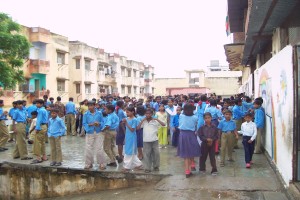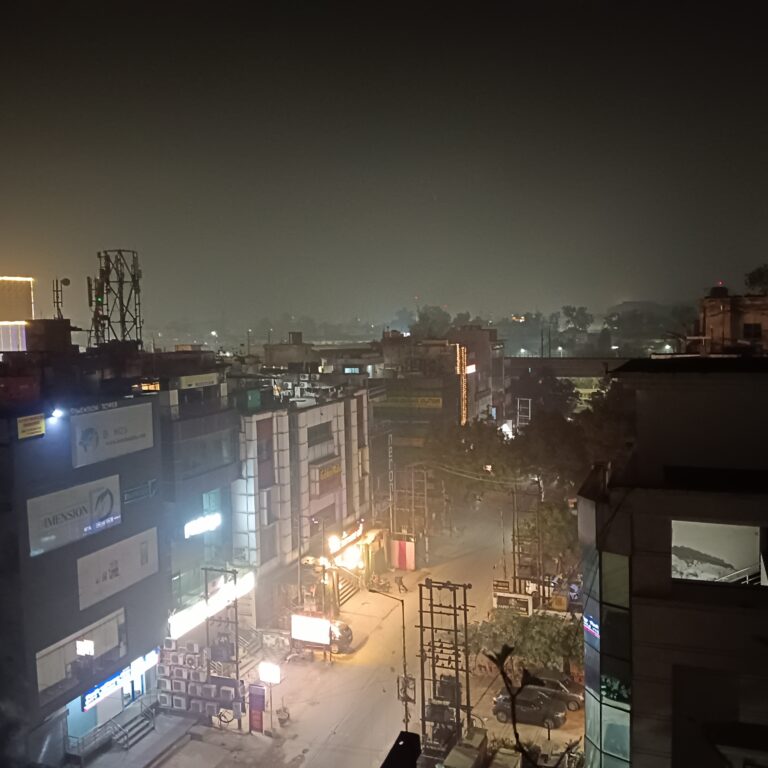
 By Venkatesh Raghavan*
By Venkatesh Raghavan*
The city has a massive handicap facing its educational standards
Mumbai, the ‘Maximum city’, was abruptly faced with deserted school buildings with school buses and other escort traffic for children being conspicuously absent on the streets. It strikes a melancholy note when one remembers that early morning walkers in Central Mumbai’s 5-garden area used to mutedly stand when the school played the national anthem aloud. The lively sign of children noisily chatting much akin to chirping of birds was no more to be with the pandemic restrictions strictly imposed.
The story is not just about bystanders or people choosing their mode of transport to commute to the school premises. It’s about careers, learning curves, critical understanding of topics related to mathematics and science besides continuity in assimilation of knowledge. In many instances school exams were done away with and the institute opted to pass the students on an auto-mode. The matriculation exams had fortunately concluded before March 24 this year.
Also read: Beneath the sheen of the tinsel town-6
Examinations and passing to the next grade however, the least of the problems the educational institutions were faced with. The dilemma for these educational institutions turned serious when it was time for them to reopen for a fresh term in mid-June. The social-distancing norms were still stringent. It was impossible for the management to conform to the strict standards. In addition, the teaching staff too, were faced with constraints as many of them had to commute from distant suburban Mumbai and get to school in time.
Now there are different sections who get affected by this constraint, namely school children, school teaching staff and also the non-teaching staff that includes peons, cleaners, clerical and office staff. The children have the roughest time of all. At a young age they are faced with the challenging situation of learning from online tutorials that warrant self-explanatory educational content. It’s a known fact that the attention span of child learners does not exceed a maximum of 10 minutes. In a classroom environment the teacher being physically present to discipline the child from distractions helps in ensuring that learning does take place. However, in online education, even granted that it’s highly interactive in design, the child left to itself may not evince interest throughout the duration of the lesson or topics.
To make matters worse, even while we are well into October, the state government has denied permission for reopening of schools, citing the reasons, increasing number of Covid-19 cases and a high risk to public health. Jethabhai, a grandfather to 10-year-old Viraj who is studying in an international school said, “The school is slated to reopen post Diwali vacations. Online training is still going on.” The reason why online should not be the preferred mode is also much to do with how the child treats its freedom. An online examination for example, offers the students especially near the high school level grades to cheat, plagiarize and respond with correct answers. In the information age, this is one of the greatest disadvantages, as students feel there is no compulsion to learn much because search engines like Google provide instant solutions.
In short, the city with a huge population bursting at its seams has a massive handicap facing its educational standards. The students don’t take their learning curves seriously and the entire learning process gets diluted. In most instances, parental guidance too is not possible for the entire length of the tutorials owing to their professional compulsions. Where does this lead to? It makes children who are groomed in routine in this fast-paced city resort to shortcuts, wearing a disinterested attitude towards academics and also forces them to lose out on interpersonal interaction afforded by a school environment.
This goes for the higher and middle-income group of kids. Those from lower economic strata and also those attending municipal schools face a more severe handicap. With personal computers or laptops being unaffordable, these children are forced to handle their tutorials from cheap android mobiles. Again, it requires that the software being handled by their schools are mobile friendly and provide a seamless information flow.
Next, how hard is this ongoing lock down stint for the teaching staff? Being confined to their homes, and little scope for personal attention, the teaching staff have to meet with the demanding task of completing the syllabus within the framework of the term despite relatively short coaching time. In addition, the teachers are unable to monitor or track progress in all instances due to the tedious nature of such an exercise online. There were also complaints that many (ones hired on contract) were forced to agree on truncated salaries.
The worst hit however, is the non-teaching staff. Without any requirement for their being physically present in the school premises and to participate in any form of activity, they are left high and dry to their own means for survival. At present, the situation needs urgent remedying and only time will tell how the children, teachers and other staff fare in the ensuing school.





